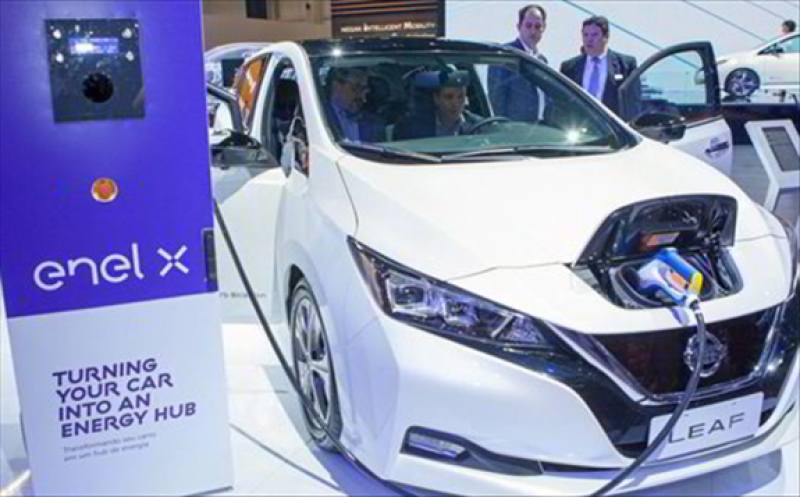Almost 30GW of electric-vehicle virtual power plants (EVVPPs) will help balance renewables-rich grids when the wind isn’t blowing and the sun isn’t shining by 2029 — a tenfold increase on today’s figures, according to a new report from Guidehouse Insights.

An EVVPP consists of hundreds or thousands of grid-connected electric vehicle (EV) batteries being controlled through an online platform to create a “virtual power plant” that can discharge megawatts of electricity from the vehicles to the grid (V2G) at times of peak demand or when wind and solar output is low.
Equally, the system can be used to reduce strain on local distribution grids by charging vehicles when power demand is low, and halting charging when demand is high — known as unidirectional (V1G) smart charging.
Because the wholesale power price rises and falls according to supply and demand, and because V2G involves payment to the EV owner, EVVPPs ensure that the costs of charging are low and that the energy used is as green as possible.
Guidehouse’s report, VPP Applications for Managed EV Charging Platforms, says that a total of 261.5MW of EV batteries are able to support EVVPPs globally today, but that this capacity will scale up to 29.9GW by 2029.
“Over the next decade, a growing portion of vehicle-grid integration [VGI] capacity is expected to integrate with VPP platforms to provide flexible capacity in response to price signals through 2029,” said Guidehouse. “V2G solutions remain a nascent market at the start of the forecast period, and V1G solutions are anticipated to contribute to the bulk of VGI-based VPP capacity over the forecast period, however, Guidehouse Insights expects that V2G-based capacity will grow globally at a compound annual growth rate (CAGR) of 83.1% from 2020-29.”
Guidehouse analyst Jessie Mehrhoff said that vehicle-grid integration is “one of the next frontiers in smart device management”.
EVVPPs will increasingly become valuable assets because they “work to achieve the greatest possible profit for distributed energy resources (DER) asset owners while maintaining the proper balance of the electricity grid at the lowest possible economic and environmental cost”, she added.
This article is reproduced at www.rechargenews.com